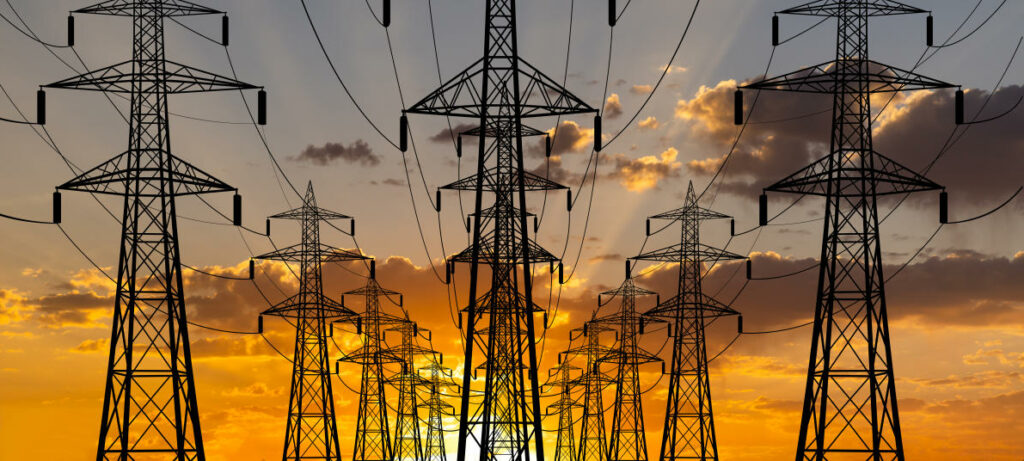Public policy debates can seem like mud-wrestling: dirty, degrading and with no one able to get a grip. But as J. Budziszewski famously said, and if it’s not famous it should be, people are logical, slowly. And thus one sees increasing acknowledgments amid the breezy pronouncements about how easy the energy transition will be that things aren’t actually looking all that easy after all. Small grounds for cheer, of course, but the fact that they are now talking about it does represent progress.
For instance in April The Economist burbled “The electric grid is about to be transformed” only immediately to add “The technological and regulatory requirements will be immense, writes Hal Hodson”. Canary Media hoped that “This NASA tech might just spur a major grid battery breakthrough” but added “EnerVenue’s still got plenty to prove”. And it conceded that “EV trucks and buses need costly grid updates. Should utilities pay?”
Even Heatmap’s claim that “Here Come the Power Lines/ America is quietly making progress on one of the biggest challenges to the renewable energy rollout” reveals that beneath the boosterism people are recognizing the scale and urgency of the challenge. Like another Canary Media item, “Google’s latest climate plan? Skip grid backlog, mimic community solar”. Which only makes sense if there is a grid backlog and it matters.
If we seem to be picking on Canary Media, the reverse is true. We’re crediting them with facing awkward realities, if only thus far obliquely. Like “California could need $50B in grid upgrades, fast” (an email, no link available). Followed by “California has a new $7.3B plan to fix its transmission problems/ The state’s grid operator unanimously approved the plan — a crucial step in California’s bid to modernize a grid that lags behind its climate goals.” But it’s not alone.
Heatmap even blurted out that:
“Some of the most interesting climate stories right now are happening in statehouses across the country. There’s no clear roadmap to decarbonizing the economy, and many states have become mini climate policy laboratories.”
This concern among enthusiasts has been building for a while. Back in late October, 2022, Reuters “Sustainable Switch” was already fretting:
“can the energy crisis sparked by Russia’s invasion of Ukraine lead to a faster clean energy transition? The International Energy Agency (IEA) thinks it can, saying that reduced supplies of Russian fossil fuels can help to hasten a green energy transition. But can it really? Before we all pat ourselves on the back, last week’s Sustainable Switch pointed to the rise of reopened coal plants getting a new lease of life to deal with this winter’s energy crisis.”
Even Hydro Ottawa, which arguably has a dog in the fight, admitted last October that:
“In order to accommodate this widespread electrification cleanly and at the level the country is promising, Canada’s electricity sector must not only be completely net zero by 2035, it must also double or triple the amount of electricity capacity that we currently have by 2050.”
And at present, given our federal system, we don’t even have a unified grid or political authority to drive such a thing forward let alone a plan for doing it. They’re convinced everyone is on board, with lines like, “As the country strives to move away from gas and diesel-powered automobiles to electric vehicles, and eventually transitions from natural gas furnaces to heat pumps” as if we were a giant hive or Camazotz. (As G.K. Chesterton once said, claiming Canada should develop a literature is like saying Canada should grow a moustache.)
Also last fall, the New York Times “Climate Forward” conceded that while solar is definitely surging triumphantly, we’re in a heap of trouble for want of reliable energy, quoting the neutral observer “Doug Vine, director of energy analysis at the Center for Climate and Energy Solutions, a group focused on accelerating the global transition to net-zero greenhouse gas emissions” that “There’s a lot of challenges. One of the things we need to see is the world coming back to normal again.”
That chaos and uncertainty are normal was apparently covered on one of the days he missed history class.



"...Canada’s electricity sector must not only be completely net zero by 2035, it must also double or triple the amount of electricity capacity that we currently have by 2050.”
Maybe this is the place where I should have commented about the understatement of the problem: By 2050, every unit of "renewable" energy generation capacity built before 2030 will have to be *replaced* just to stay even - because the lifespan of these gadgets is only 20 years. If demand triples be 2050, we will have to sextuple the installed capacity between now and then to meet the new demand while replacing the old. As I said, a Sisyphean task. The environmental impact of all of the mining and manufacturing would be incalculable, if it were possible.
@Thylacine Well, it IS possible, once, at the cost of crippling your entire economy, driving most of your citizens and industry away (which reduces the required capacity) and destroying huge swathes of pristine forest. The REAL problem is then starting from that bleak situation and having to replace and expand it AGAIN by 2070 and 2090...
Basically you have all these pro-renewable orgs admitting that the cart has been put before the horse.And no proper cost-benefit studies have ever been done for any renewable scheme.Just the hope that some future technology will save the day.Like having faith in pixie dust or something.